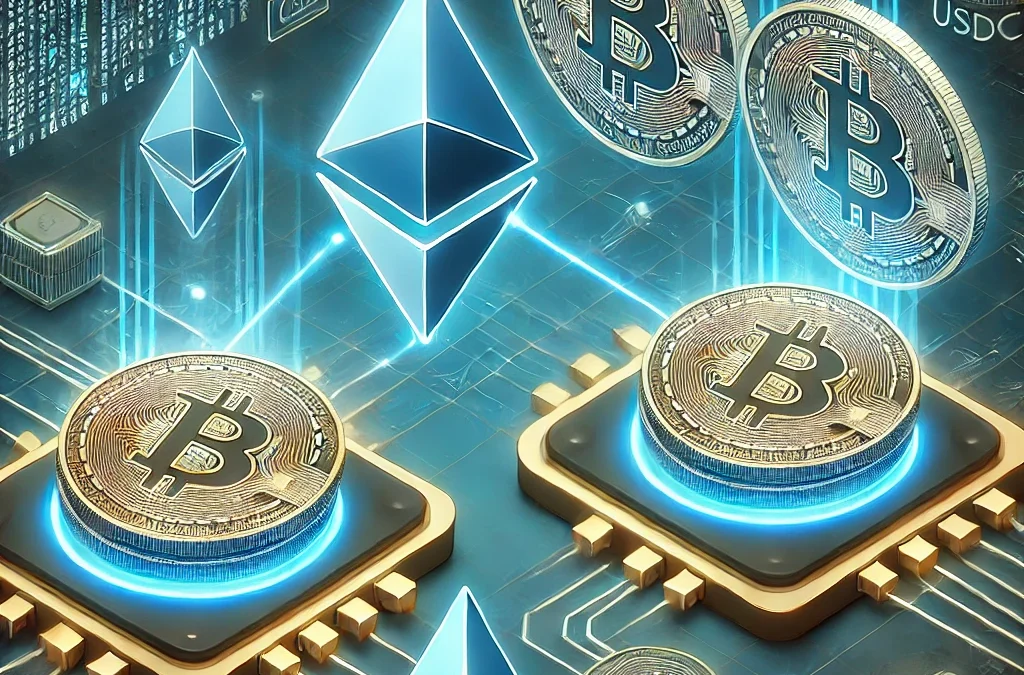A Beginner’s Guide to Token Swapping: How to Seamlessly Exchange Tokens on the Blockchain
As the world of cryptocurrency grows more complex, token swapping has emerged as one of the most efficient and user-friendly ways to exchange tokens. With the rise of Decentralized Finance (DeFi), token swapping offers an alternative to traditional exchanges, giving users more control over their assets, faster transaction times, and lower fees. Whether you’re new to cryptocurrency or looking to optimize your trading strategy, understanding how to perform token swaps is essential.
This guide will walk you through everything you need to know about token swapping, including what it is, how it works, and how you can use it to make seamless, secure exchanges on the blockchain.
What is a Token Swap?
A token swap allows users to exchange one type of cryptocurrency for another, without going through a centralized platform. Traditionally, exchanges like Binance or Coinbase acted as intermediaries where you would deposit funds, place an order, and trade. Token swapping bypasses this by using Decentralized Exchanges (DEXs), which rely on smart contracts and liquidity pools to facilitate trades.
How Does Token Swapping Work?
Token swaps operate through decentralized exchanges that use liquidity pools and smart contracts. Here’s how the process works step by step:
- Liquidity Pools: At the core of a token swap is the liquidity pool. A liquidity pool is a pool of funds that liquidity providers deposit into the platform. These funds consist of two different tokens, which form a trading pair. For example, if you want to swap Ethereum (ETH) for USD Coin (USDC), the platform will draw from a pool that contains both ETH and USDC.
- Smart Contracts: Smart contracts are self-executing contracts that facilitate token swaps automatically. When you initiate a swap, a smart contract checks for liquidity and executes the trade if the conditions are met. You don’t need to trust a third party; the contract operates autonomously based on predefined rules.
- Slippage and Price Impact: Slippage is the difference between the expected price of a swap and the actual price at which the swap occurs. In times of high market volatility or low liquidity, slippage can become significant. Decentralized exchanges usually offer slippage settings to control the range of acceptable price movement.
- Transaction Fees (Gas Fees): When performing a token swap, especially on networks like Ethereum, users must pay gas fees. These fees are the cost of processing transactions on the blockchain and can vary depending on network congestion.
Why Token Swapping is Important in DeFi
Token swapping has become a vital feature in the DeFi ecosystem for several reasons:
- Decentralization and Security: Unlike centralized exchanges where users must deposit their funds, token swapping through decentralized platforms allows users to maintain control of their assets. The funds remain in your wallet, minimizing the risk of hacking or losing assets due to exchange mismanagement.
- Efficiency: Token swaps are fast and efficient. There’s no need to wait for an order to be matched on a traditional exchange. Liquidity pools ensure that tokens are available for immediate trading, and the process can be completed within seconds.
- Lower Fees: Token swaps typically have lower fees compared to centralized platforms, which often charge both trading and withdrawal fees. Users only pay gas fees and a small fee to liquidity providers, making it more cost-effective, especially for smaller trades.
- Anonymity: Since decentralized exchanges don’t require you to create an account or go through Know Your Customer (KYC) procedures, token swapping offers greater privacy. Transactions are conducted directly from your wallet, without the need to share personal information.
Step-by-Step Guide to Swapping Tokens
Now that we understand the basics of token swapping, let’s go through a step-by-step guide to performing your first swap.
Step 1: Set Up Your Wallet To begin swapping tokens, you’ll need a compatible cryptocurrency wallet, such as MetaMask, Trust Wallet, or Coinbase Wallet. These wallets support decentralized exchanges and can store a wide variety of tokens.
- Download and install your chosen wallet.
- Create a wallet and securely store your seed phrase.
- Fund your wallet with cryptocurrency (like ETH for Ethereum-based swaps).
Step 2: Choose a Decentralized Exchange (DEX) Some popular decentralized exchanges for token swapping include:
- Uniswap (Ethereum): One of the largest DEXs operating on the Ethereum network.
- PancakeSwap (Binance Smart Chain): A leading exchange on the Binance Smart Chain, with lower gas fees.
- JuicySwap: A newer platform offering seamless token swaps and liquidity pooling.
Visit the DEX’s website, and click “Connect Wallet” to link your wallet to the platform.
Step 3: Select Tokens to Swap Once your wallet is connected, you’ll need to select the token you want to swap from and the token you want to swap to.
- In the first dropdown, choose the token you currently have (e.g., ETH).
- In the second dropdown, choose the token you want to receive (e.g., USDC).
Step 4: Input the Amount Enter the amount of the token you want to swap. The platform will automatically calculate how much of the target token you’ll receive based on current market prices and available liquidity.
Step 5: Review the Slippage Tolerance and Fees Before confirming the swap, review the slippage tolerance (the allowable range for price fluctuations) and gas fees. Adjust the slippage tolerance if necessary—typically, 1-2% is a safe range, but volatile markets may require higher tolerance.
Step 6: Execute the Swap Once everything looks good, click “Swap” or “Confirm”. Your wallet will prompt you to approve the transaction and pay the gas fee. Confirm the transaction, and the DEX will process the swap.
Step 7: Check Your Wallet After the swap is complete, check your wallet to see the new tokens. The swap will be recorded on the blockchain, and you can view the transaction details using a blockchain explorer like Etherscan or BscScan.
Best Practices for Token Swapping
- Choose Trusted DEXs: Stick to well-known decentralized exchanges like Uniswap or PancakeSwap to avoid fraudulent platforms or fake tokens.
- Beware of High Gas Fees: On the Ethereum network, gas fees can spike during periods of high traffic. It’s often best to time your swaps during off-peak hours.
- Research Tokens: Always verify the contract address of any token you’re swapping to ensure you’re getting the correct asset. This helps you avoid falling for scam tokens.
- Watch for Market Volatility: Token prices can fluctuate rapidly in the crypto market. Set a reasonable slippage tolerance to avoid losing value during volatile periods.
The Future of Token Swapping
Token swapping is rapidly becoming the backbone of DeFi, as it enables fast, decentralized, and secure trading. Innovations like cross-chain swaps (swapping tokens across different blockchain networks) and layer-2 solutions (to reduce gas fees) are likely to further enhance the user experience, making token swapping more efficient and accessible.
As decentralized finance continues to grow, token swapping will likely evolve into even more sophisticated tools, providing users with greater flexibility, control, and security when trading cryptocurrencies.
Conclusion
Token swapping is an essential tool for anyone involved in the cryptocurrency ecosystem. It allows users to exchange assets quickly and securely, without relying on intermediaries. By understanding how token swapping works and following best practices, you can navigate the DeFi world with confidence and efficiency. Whether you’re a beginner or an experienced trader, token swaps will remain a powerful option for managing your digital assets in the decentralized finance landscape.


